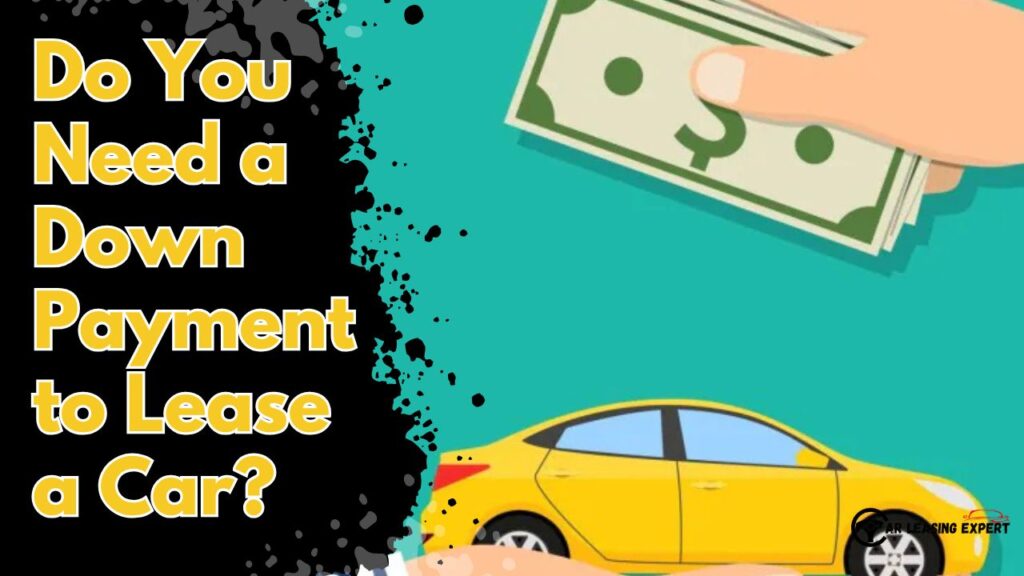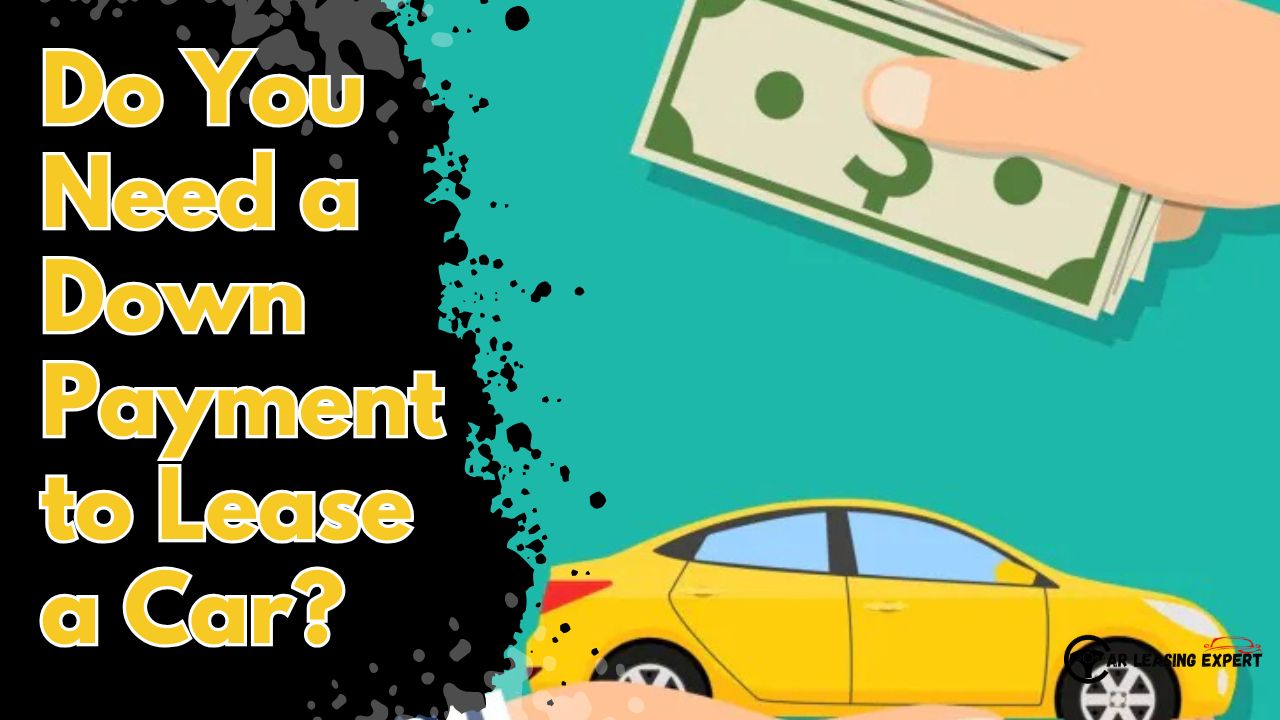Do You Need a Down Payment to Lease a Car? If you’ve never leased a car before, you might be wondering about the down payment. When buying a car, you’re used to paying a large amount upfront. But with a car lease, it’s not the same. In fact, making a big down payment on a lease could actually cost you more money.
Leasing a car is attractive because it allows you to drive a new vehicle with lower monthly payments compared to buying. A common question people have is whether a down payment is required when leasing a car.
What is Car Leasing?
Leasing a car involves signing a contract to use a vehicle for a set period of time, usually between 2 and 4 years. Instead of paying the full cost of the car, you only pay for its depreciation over the lease period. Your monthly payments are determined by the value of the car, the estimated depreciation, and any fees.
Leasing vs. Buying
| Aspect | Leasing | Buying |
|---|---|---|
| Ownership | You don’t own the asset; it’s returned at lease end. | You own the asset outright after payment. |
| Upfront Costs | Typically lower (e.g., security deposit or first payment). | Higher upfront costs (e.g., down payment, taxes, fees). |
| Monthly Payments | Generally lower than loan payments. | Higher monthly payments due to loan repayment. |
| Maintenance | Often included in the lease (for cars or rentals). | Owner is responsible for all maintenance costs. |
| Flexibility | Easier to upgrade or walk away after lease term. | Less flexible; selling can take time and effort. |
| Long-Term Costs | Can be higher over time without ownership benefits. | Lower in the long term, as you build equity. |
| Equity | No equity; you pay for use only. | Builds equity as payments are made. |
| Depreciation | Not your concern; the lessor absorbs it. | You bear the depreciation cost of the asset. |
| Customization | Limited (e.g., no major modifications allowed). | Full control to customize as desired. |
| Tax Benefits | Possible deductions for business leases. | Mortgage interest or depreciation may be deductible. |
| Commitment | Short-term commitment (e.g., 1-3 years). | Long-term commitment (often 15-30 years for a house). |
| End of Term | Must return the asset or buy it at residual value. | You fully own the asset and can sell or keep it. |
| Best For | People seeking flexibility and lower upfront costs. | Those looking for long-term value and ownership. |
What is a Down Payment?
A down payment, also known as a capitalized cost reduction or cap cost reduction, is an initial payment made to reduce the amount financed and subsequently the monthly lease payments. While a down payment is common, it is not always required to lease a car.
Many people believe that a down payment is always required for a lease. However, this is not always true, as no-down lease options are becoming more popular.

Do You Really Need a Down Payment to Lease a Car?
You don’t always need a down payment to lease a car. While making a down payment (also called a capitalized cost reduction) can lower your monthly payments, many dealerships and leasing companies offer leases with no down payment required.
Most leases don’t ask for a down payment. Usually, all you need to pay upfront are the first month’s payment, a security deposit, the acquisition fee, and any other fees or taxes. However, if you want to lower your monthly payments, you can choose to pay more upfront.
Pros and Cons of Down Payment in a Car Lease
Leasing a car is not a one-size-fits-all decision, and there are pros and cons to paying a down payment. It all comes down to your priorities and financial needs.
For example, if you want to buy a new car every few years, leasing may be a good option for you as it is often cheaper than buying a car outright. However, if you want to own the car once the lease ends, then buying it may be the better option.
That said, here are some pros and cons of leasing a car:
Pros:
Lower monthly payments
Offset of additional fees like acquisition fees
Greater flexibility to negotiate the terms of your lease
Could result in a lower interest rate
Cons:
You don’t own the car once the lease ends
Mileage restrictions
Attrition fees
If you want to get out of the lease early, you may have to pay a fee
Whether you buy or lease a car, it all depends on your lifestyle, personal preference, needs, and financial situation. There’s no right or wrong answer, and it’s ultimately up to you to decide which path is best for you.
Tips for Negotiating a Lease Without a Down Payment
Negotiating a no-money-down lease can be challenging, but with the right approach, you can achieve favorable terms. Here are some tips to help you negotiate effectively:
1. Research and Prepare
- Research the market value of the car you’re interested in and understand average lease terms and rates.
- Look for manufacturer promotions or dealer offers that include no-money-down leases.
- Check your score and credit report. A higher credit score can strengthen your negotiating position.
2. Be Transparent About Your Needs
- Let the dealer know from the start that you’re interested in a no-money-down lease. Be clear about your financial situation and why you’d prefer not to make a down payment.
- Highlight that you’re a serious customer and might consider future leases or purchases from the dealer.
3. Negotiate key elements
- Focus on negotiating the monthly payment rather than the total cost. Make sure the payment fits within your budget.
- The money factor is the interest rate on the lease. Negotiate a lower money factor to lower your monthly payments.
- Understand the residual value of the car. A higher residual value can lower your monthly payments.
4. Take advantage of lease transfers
Use platforms like Swapalease or LeaseTrader to find existing leases with shorter remaining terms. These can often be transferred without a down payment.
5. Consider multiple dealers
Visit multiple dealers to compare offers. Use competitors’ offers as leverage to negotiate better terms. Build rapport with sales reps. They may be more willing to accommodate your needs if they see you as a long-term customer.
6. Be ready to walk away
If the dealer insists on a down payment, be ready to walk away. Sometimes, showing that you’re willing to walk away can lead to better deals. Keep other options in mind, such as different car models or other dealers.
7. Use discounts and incentives
Look for manufacturer discounts or incentives that can be applied to your lease to lower the overall cost. If you’re a returning customer, ask about loyalty programs that may offer better terms.
8. Get pre-approved financing
Explore financing options through banks or credit unions. A pre-approved lease can give you more negotiating power at the dealership.
Alternative Options to Down Payments
If you’re looking to lease a car without making a down payment, there are several alternative options to consider. Here are some strategies to help you lease a car with little or no upfront costs:
1. No-Down Lease Deals
Many car manufacturers and dealers offer no-down lease deals as part of promotional events. These deals often come with competitive monthly payments. Look for no-down lease deals during major sales events, such as end-of-year sales or holiday promotions.
2. Lease Incentives and Rebates
Some manufacturers offer cash incentives or rebates that can be applied to your lease, effectively reducing or eliminating the need for a down payment. Negotiate with the dealer to apply any available discounts or incentives to the upfront costs of your lease.
3. Trade-In Vehicle
If you have a vehicle to trade in, use its value to cover the upfront costs of your new lease. This can offset the need for a down payment. If the vehicle you’ve traded in has positive equity, it can be applied directly to your new lease, lowering the overall cost.
4. Lease Transfer
Platforms like Swapalease and LeaseTrader allow you to take over someone else’s lease with a shorter remaining term. These leases typically require little to no down payment. By taking over an existing lease, you can avoid the upfront costs that are typically associated with starting a new lease.
5. Extended Lease Terms
Opting for a longer lease term can sometimes result in lower monthly payments, making it easier to manage without a down payment. Work with the dealer to find a lease term that balances monthly payments and total cost.
6. Financing Options
Explore financing options through banks or credit unions. Some lenders offer lease financing with little to no upfront cost. Get pre-approved for a lease through a third-party lender to strengthen your negotiating position with the dealer.
7. Membership and loyalty programs
If you’re a repeat customer, ask about loyalty programs that may offer reduced upfront costs or no-down-payment options. Some memberships, such as those with credit unions or professional organizations, may provide access to special lease deals with minimal upfront costs.
Final Thoughts
Not all car leases come with low money factors. If you’re leasing a car with a high price and a high money factor, it might be a good idea to put some money down upfront. However, if you’re leasing a reasonably priced car with special deals and low rates, starting the lease with little or no money down could be a good option for you.
FAQs
Is a large down payment worth it?
The short answer is that you don’t have to pay a lot of money up front to lease a vehicle. In fact, if the terms of the lease are good, you may want to pay as little as possible. Remember that the lease payment involves the difference between the vehicle’s selling price when it was new and its residual value, which is the value it has at the end of the lease. This is the amount you would pay if you decided to buy the car at the end of the lease.
Why make a large down payment?
When you buy or lease a car, the only reasons you would consider paying a down payment are to lower your monthly payment, lower interest charges, to get approved for a loan, to get a lower interest rate, or to avoid running out of money on the car.
Is it better to lease a car with no down payment?
The down payment on a lease is known as cap cost reduction and it lowers your monthly payments. Monetary factors, also known as interest rates, are generally low in leases. If you’re comfortable with no-money-down payments, you may find a better use for your money.




